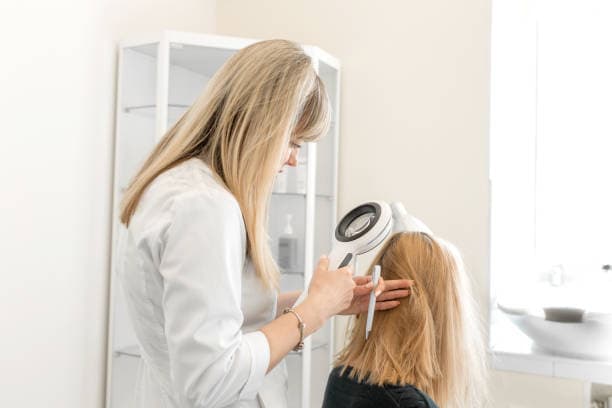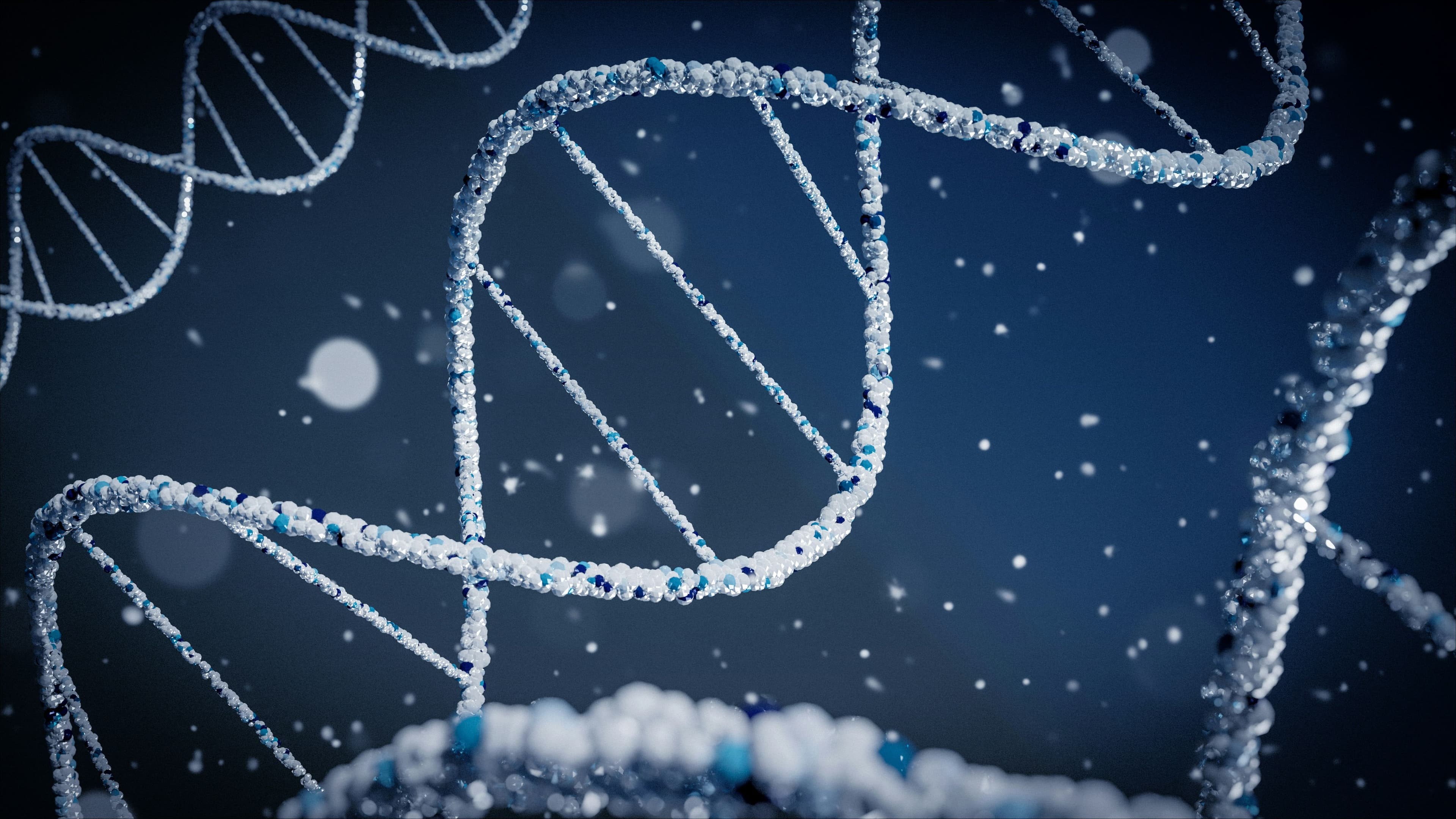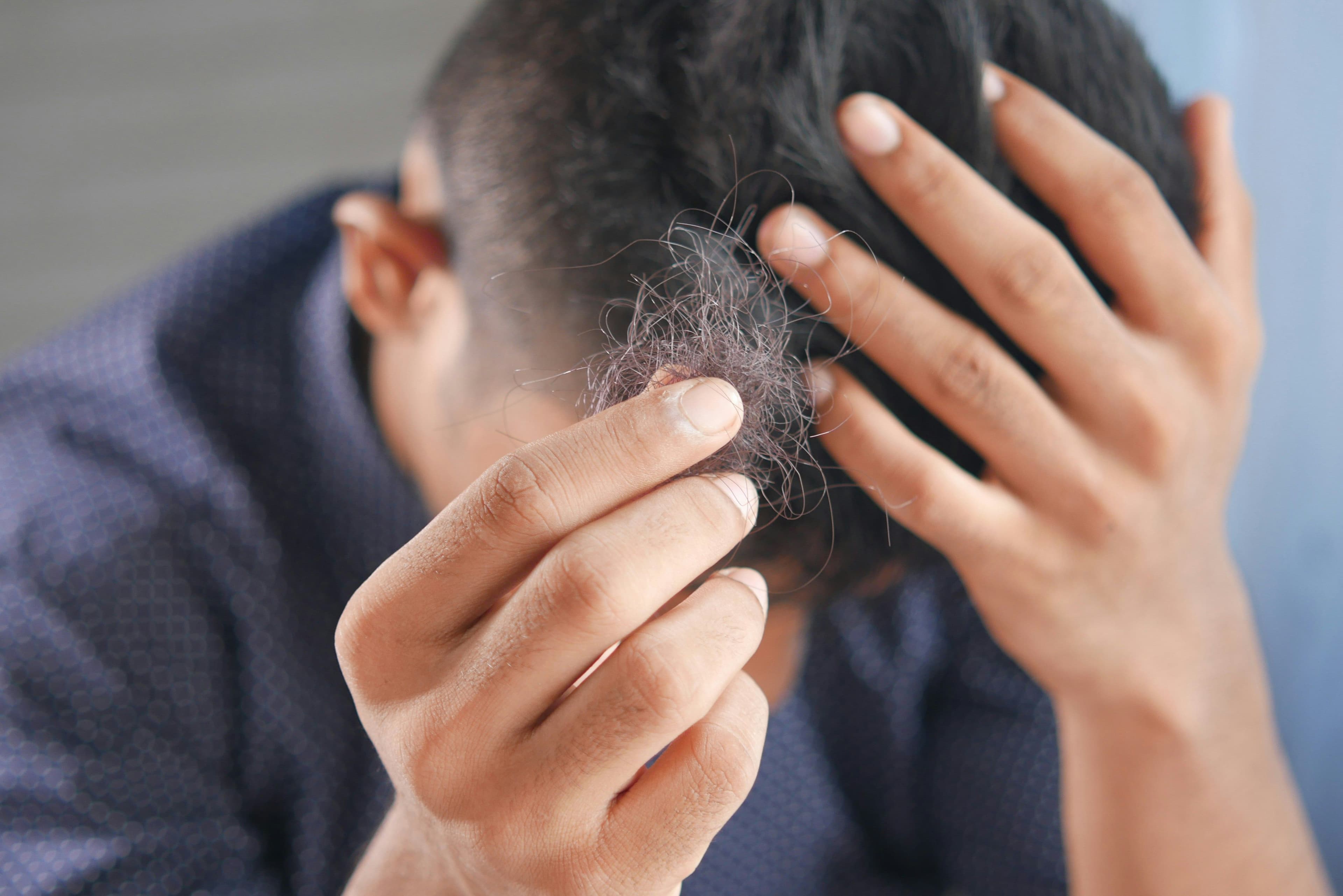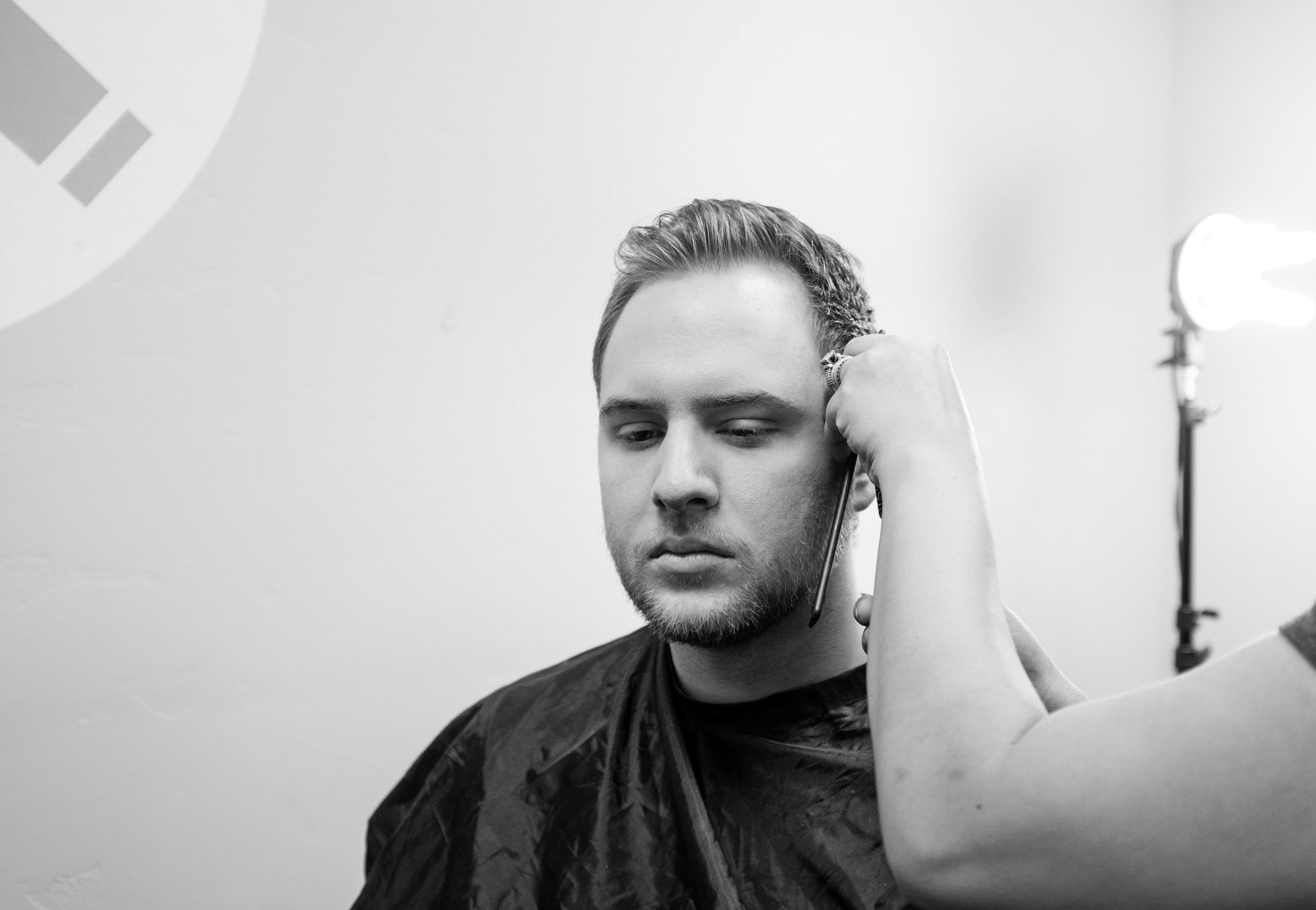Blog
Product
Exploring Effective Bald Hair Solutions and Treatments
Updated: Jul 4, 2024

Are you noticing more hair on your pillow than on your head? Losing hair can be a distressing experience, stirring up feelings of frustration and a loss of confidence. Fortunately, regrowing hair on a bald spot is often achievable with the right combination of treatments and patience. In this comprehensive guide, we'll explore a variety of effective solutions and treatments for bald hair, from natural remedies and over-the-counter products to medical and surgical interventions, helping you to reclaim not just your hair, but also your confidence.
Understanding the Causes Behind Baldness and Hair Thinning

Hair loss, a concern affecting countless individuals globally, can be attributed to a variety of factors. Genetic predispositions, often referred to as androgenetic alopecia or male-pattern baldness, play a significant role. This type of hair loss typically follows a predictable pattern and can start as early as one's twenties. However, it's crucial to recognize that the causes of baldness and hair thinning are not solely genetic.
Environmental factors also have a substantial impact on hair health. Stress, for instance, can lead to a condition known as telogen effluvium, where hair prematurely enters the resting phase and subsequently falls out. Moreover, certain hairstyles that pull on the hair, like tight braids or ponytails, can cause traction alopecia. Other contributing factors include:
- Nutritional deficiencies such as low protein or iron levels
- Effects of medications, including chemotherapy
- Underlying medical conditions like thyroid disorders
Understanding the root causes of hair loss is essential for determining the most effective treatment strategies. Whether the hair loss is due to hereditary factors, lifestyle, or medical conditions, identifying the specific cause is the first step in combating hair thinning and baldness. This knowledge not only aids in selecting appropriate treatments but also in preventing further hair loss.
Patterned Hair Loss: An Overview

Patterned hair loss, also known as androgenetic alopecia, is a common type of hair thinning that primarily affects the scalp's top and front areas. This condition manifests differently in males and females; men typically experience a receding hairline and thinning at the crown, while women tend to have diffuse thinning across the top of their heads.
Diagnosing this condition involves examining the pattern of hair loss and may include tools like trichoscopy or even a scalp biopsy to rule out other causes. The progression of patterned hair loss can often be assessed using scales such as the Hamilton–Norwood scale for men and the Ludwig scale for women, which help in categorizing the severity of baldness.
Androgenetic Alopecia: Symptoms and Affected Demographics

Androgenetic alopecia, a genetically predetermined condition, is characterized by the progressive thinning of scalp hair following puberty. The symptoms include a distinct pattern of hair loss, with men showing more pronounced balding in the vertex and frontotemporal regions and women experiencing a broadening of the part in their hair while maintaining the frontal hairline.
This form of hair loss is prevalent across various demographics but is most common in Caucasian males, followed by Asian and African American populations. The condition tends to become more noticeable with age, particularly after menopause in women, due to hormonal changes. Understanding these patterns and demographic impacts is crucial for tailored treatment and management of androgenetic alopecia.
Natural Treatments for Hair Loss: What Works?

When exploring natural treatments for hair loss, it's crucial to consider both traditional and modern approaches that may help foster hair regrowth. Herbal remedies have been used for centuries, with some like saw palmetto and ginseng reported to combat dihydrotestosterone (DHT), a known contributor to hair loss. While these natural options are favored for their low side effects, the scientific backing is varied, and results can differ from person to person.
Dietary changes are another cornerstone of natural hair loss treatment. A nutrient-rich diet can support hair follicle health and promote new hair growth. Key nutrients include:
- Iron, found in leafy greens and red meat
- Vitamin D, from fish and sunlight exposure
- Biotin, in nuts and whole grains
These nutrients help nourish the scalp and can be crucial for maintaining healthy hair.
In addition to herbs and nutrition, lifestyle modifications can significantly impact hair health. Reducing stress through techniques like yoga and meditation, avoiding harsh chemical treatments, and choosing gentle hair care products can all help reduce hair loss and encourage hair regrowth. It's about creating a holistic approach that combines various natural methods to achieve the best results.
Using Laser Devices for Hair Loss Treatment

Low-level laser therapy (LLLT), also known as red light therapy, has emerged as a promising option in the realm of hair loss treatments. This non-invasive technology utilizes specific wavelengths of light aimed at stimulating hair follicles to enhance hair growth. The FDA has cleared several laser devices for this purpose, reflecting their safety profile and potential efficacy. However, the effectiveness can vary, with some studies showing significant improvement in hair density and others suggesting more modest results.
Despite its potential, there are considerations to keep in mind with laser therapy for hair loss. Long-term safety and effectiveness are still under review, and the treatment requires consistency and patience, as results are gradual and typically seen over several months. Moreover, the cost can be prohibitive for some, and it's less effective for advanced stages of hair loss. As with any treatment, it's crucial to consult healthcare professionals to understand the suitability and expected outcomes of using laser devices for hair regrowth.
Over-the-Counter Bald Head Treatments

Over-the-counter treatments for baldness have become increasingly popular due to their accessibility and ease of use. One of the most well-known options is minoxidil, available in both liquid and foam forms. Minoxidil is applied directly to the scalp and is known for its ability to stimulate hair follicles and encourage hair growth. It's suitable for both men and women and has been clinically proven to be effective, especially in cases of pattern baldness. Regular use is essential for seeing results, and it's important to continue the treatment to maintain hair growth.
In addition to minoxidil, there are various shampoos and conditioners designed to support scalp health and reduce hair thinning. These products often contain nutrients that nourish the scalp and strengthen hair roots. Key ingredients to look for include:
- Ketoconazole, which has antifungal properties and may help in reducing scalp irritation.
- Biotin, known for strengthening hair strands.
- Saw palmetto, which might help in blocking the hair-loss-inducing effects of DHT (dihydrotestosterone). While these products can be helpful, they typically work best when used in conjunction with treatments like minoxidil.
Medical Treatments for Hair Loss
Medical treatments for hair loss have evolved significantly, offering hope and solutions to those struggling with this common issue. Topical treatments such as minoxidil are widely recognized and available over-the-counter. These treatments work by stimulating hair follicles to promote growth and can be particularly effective in early stages of hair thinning. Consistent application is crucial for seeing results, and it's important to continue using the product to maintain hair growth.
Besides topical solutions, oral medications have shown promising results in treating hair loss. These include FDA-approved drugs like finasteride, which is primarily used to treat male pattern baldness. It works by inhibiting the production of dihydrotestosterone (DHT), a hormone associated with hair loss. While effective, these medications can come with side effects, so it's essential to consult with a healthcare provider to ensure they are a safe option for you. Some potential side effects include:
- Changes in hormone levels
- Potential impact on mood or libido
- Long-term commitment to daily medication
Combining different medical treatments can often enhance outcomes. For instance, using minoxidil alongside finasteride can provide a synergistic effect, improving hair density more than using either treatment alone. However, every individual's situation is unique, and what works for one person may not work for another. Consulting with a dermatologist can help tailor a treatment plan that suits your specific type of hair loss and overall health.
FDA-Approved Medications for Hair Loss
The FDA has approved a few key medications for the treatment of hair loss, primarily targeting androgenetic alopecia. The most commonly known are minoxidil and finasteride. Minoxidil, available as a topical treatment, is suitable for both men and women and works by enhancing hair follicle activity and promoting hair regrowth. It is generally applied once or twice a day and can be used indefinitely for ongoing results.
Finasteride, on the other hand, is an oral medication that is typically prescribed for male pattern baldness. It prevents the conversion of testosterone to DHT, a key factor in the progression of hair loss in men. It's important to note that finasteride is usually not recommended for women, especially during pregnancy, due to potential risks of birth defects. Regular follow-ups and monitoring are recommended to manage any side effects and evaluate the effectiveness of the treatment.
Seeking Dermatologist Help for Hair Loss
Consulting with a dermatologist is a critical step in addressing hair loss effectively. Dermatologists specialize in skin, hair, and nail disorders and can provide a comprehensive diagnosis by examining your hair loss pattern, conducting scalp examinations, and possibly ordering blood tests to rule out underlying conditions. They can identify specific types of hair loss, such as alopecia areata, an autoimmune condition, or traction alopecia, which results from physical stress on hair follicles.
After diagnosis, dermatologists can develop personalized treatment plans that may include medical treatments, lifestyle adjustments, or even surgical options depending on the severity and type of hair loss. They can also monitor the progress of the treatment and make adjustments as needed, ensuring the best possible outcome. Their expertise not only helps in treating hair loss but also in preventing further deterioration by advising on proper hair care techniques and nutritional needs.
Surgical Treatments for Hair Restoration
Surgical treatments for hair restoration, such as hair transplant surgeries, have become increasingly popular for those seeking effective solutions for baldness. These procedures are typically recommended for individuals who have not responded well to medical treatments or those looking for more permanent solutions. Hair transplants involve transferring hair from parts of the scalp where it is plentiful to the balding or thinning areas, offering a chance to regain a fuller head of hair.
To determine if someone is a good candidate for hair transplant surgery, several factors are considered. These include the density of the donor area, the extent of hair loss, and overall scalp health. Ideal candidates are those who have:
- Stable hair loss patterns
- Adequate hair density in donor sites
- Good scalp elasticity
These elements help ensure that the hair transplant results are both natural-looking and sustainable over time.
Hair Transplantation: A Permanent Solution?
Hair transplantation has been hailed as a permanent solution for hair loss, primarily because the transplanted hair is genetically resistant to balding. The most common techniques, such as Follicular Unit Extraction (FUE) and Follicular Unit Transplantation (FUT), involve removing hair follicles from the donor area and implanting them into the balding sections. Once these follicles establish themselves in the new location, they continue to grow naturally, which can significantly improve the hair's appearance and density.
While hair transplantation offers a long-term solution for hair loss, there are important considerations to keep in mind:
- The success of a hair transplant largely depends on the skill of the surgeon and the viability of the donor hair.
- Post-surgery, it takes several months for the transplanted hair to grow and blend with the existing hair.
- Future hair loss can still occur, which might require additional treatments or touch-ups.
Understanding these factors is crucial for setting realistic expectations and achieving satisfactory results from a hair transplant.
Coping with Hair Loss: Tips and Strategies
Coping with hair loss involves more than just addressing the physical aspects; it's also about managing the emotional impact. Acceptance is a crucial first step. Recognize your feelings about hair loss and understand that it's okay to feel upset or frustrated. This can be a pivotal moment in seeking further support and finding solutions that work for you.
Exploring cosmetic options can also provide relief and boost confidence. Consider trying:
- Wigs or hairpieces that match your style and comfort
- Hair extensions for adding volume and length
- Scarves and hats as fashionable alternatives that keep you looking chic
These options not only help in covering bald patches but also in expressing your style and personality.
Discover Personalized Bald Hair Solutions with MyHair
MyHair revolutionizes hair care by integrating AI technology to analyze your hair health instantly with just a single photo. This approach offers personalized recommendations based on your unique hair type, texture, and current environmental conditions. It's like having a dermatologist in your pocket, ready to provide expert advice tailored specifically for you, anytime and anywhere.
The benefits of using MyHair extend beyond simple convenience. Here are a few key advantages:
- Real-time advice that adapts to daily weather changes, helping you manage your hair optimally whether it's humid, dry, or windy.
- Personalized care plans developed from a deep understanding of your hair's specific needs.
- Easy integration into your daily routine, enhancing your hair care regimen without extra hassle.
These features make MyHair an indispensable tool for anyone serious about maintaining or improving their hair health.
Frequently Asked Questions
Can you regrow bald hair?
Yes, regrowing hair on a bald spot is often achievable with the right combination of treatments and patience. There are a variety of effective solutions and treatments for bald hair, including natural remedies, over-the-counter products, and medical or surgical interventions.
Can you fix bald hair?
Yes, bald hair can be addressed with several treatments and solutions. These range from using over-the-counter products like minoxidil, engaging in natural treatments such as herbal remedies and dietary changes, to medical treatments and even surgical options like hair transplant surgeries.
What helps to grow hair in bald head?
Several approaches can help grow hair on a bald head, including using minoxidil, natural remedies like herbal supplements and improving your diet, low-level laser therapy, and medical or surgical treatments depending on the severity and type of hair loss.
How to regain lost hair?
Regaining lost hair can be approached through multiple strategies such as using topical treatments like minoxidil, making dietary changes to improve nutrient intake, reducing stress, and consulting with a dermatologist to get tailored medical treatments or consider surgical options if necessary.